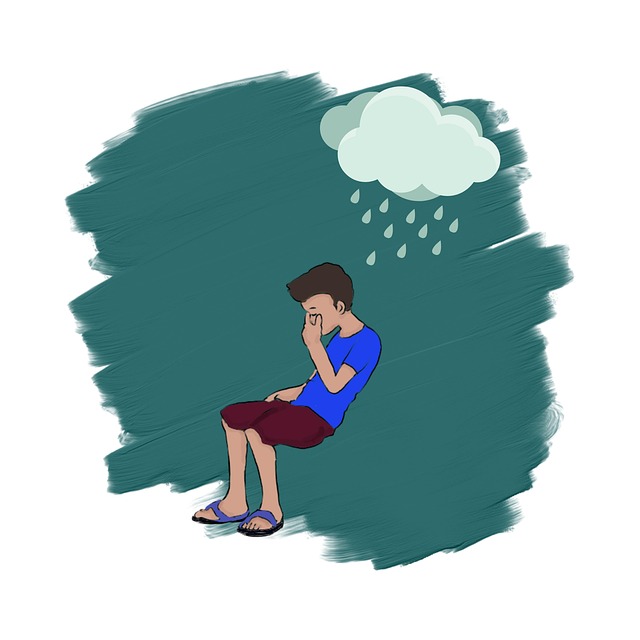Burnout among healthcare providers in Wheat Ridge Chronic Pain Therapy settings is addressed through early recognition of signs, mental health awareness, and compassion cultivation practices. The specialized approach at Wheat Ridge focuses on mindfulness meditation, cognitive behavioral therapy, and emotional regulation to manage stress and maintain work-life balance. Sustainable strategies for self-care include setting boundaries, practicing hobbies, and stress management techniques like journaling and mindfulness. Organizations can support staff by implementing policies promoting work-life balance, providing counseling, and fostering open communication. These proactive measures aim to prevent burnout, improve patient care, and create a sustainable work environment.
“In the demanding landscape of healthcare, burnout among providers is a pressing issue. This comprehensive guide explores effective strategies to combat this growing concern. From understanding the signs and causes of burnout to specialized approaches like Wheat Ridge Chronic Pain Therapy, we delve into innovative solutions. Additionally, it highlights work-life balance techniques, self-care practices, and organizational responsibilities in fostering supportive environments. By implementing these strategies, healthcare professionals can navigate their high-stress roles with resilience.”
- Understanding Burnout: Signs and Causes in Healthcare Providers
- Wheat Ridge Chronic Pain Therapy: A Specialized Approach to Burnout Prevention
- Work-Life Balance Strategies for Healthcare Professionals
- Self-Care Practices for Sustaining Well-being in High-Stress Roles
- Creating Supportive Environments: Organizational Responsibilities for Burnout Prevention
Understanding Burnout: Signs and Causes in Healthcare Providers

Burnout among healthcare providers is a growing concern, impacting not only their well-being but also patient care. Recognizing burnout early is crucial for effective prevention. Healthcare professionals experiencing burnout often exhibit physical and emotional exhaustion, cynicism or detachment from work, and feelings of ineffectiveness or lack of accomplishment. These signs can manifest gradually, making it essential for both individuals and organizations to stay vigilant.
Several factors contribute to healthcare provider burnout, including heavy workloads, long working hours, high-stress environments, and a constant need for emotional labor. The demand for continuous care and the emotional toll of dealing with patients’ pain, especially in Wheat Ridge Chronic Pain Therapy settings, can be particularly taxing. Enhancing Mental Health Awareness and implementing compassion cultivation practices, such as Mindfulness Meditation, have proven effective in mitigating these effects.
Wheat Ridge Chronic Pain Therapy: A Specialized Approach to Burnout Prevention

Wheat Ridge Chronic Pain Therapy offers a specialized approach to burnout prevention tailored for healthcare providers, particularly those in pain management. By focusing on both physical and mental aspects of chronic pain, this therapeutic model goes beyond symptom relief. It incorporates techniques like mindfulness meditation, cognitive behavioral therapy, and emotional regulation strategies, empowering medical professionals to manage their own pain and stress levels effectively.
This holistic approach addresses the growing concern of mental health awareness among healthcare workers, who often face high-stress environments and demanding patient populations. Through individualized risk management planning, Wheat Ridge Chronic Pain Therapy equips professionals with tools to set boundaries, prioritize self-care, and maintain a healthy work-life balance—crucial elements in mitigating burnout risk and enhancing long-term well-being.
Work-Life Balance Strategies for Healthcare Professionals

In the fast-paced and demanding world of healthcare, professionals often face challenges in maintaining a healthy work-life balance. This is especially true for those in specialized fields like Wheat Ridge Chronic Pain Therapy, where compassion and emotional resilience are paramount. To mitigate burnout, healthcare providers must prioritize strategies that foster a sustainable routine. One effective approach is setting clear boundaries between professional and personal time, ensuring dedicated moments for rest and recreation. This could involve scheduling leisure activities, practicing hobbies outside of work, and establishing a regular sleep routine to rejuvenate the mind and body.
Additionally, incorporating stress management techniques such as mindfulness meditation or engaging in compassion cultivation practices can significantly enhance resilience. These practices enable healthcare professionals to navigate demanding situations with greater emotional agility. By integrating emotional healing processes into their self-care routines, providers can better manage workplace stressors, improve patient interactions, and ultimately provide more compassionate care. Such holistic approaches are vital in sustaining a fulfilling career while maintaining personal well-being.
Self-Care Practices for Sustaining Well-being in High-Stress Roles

In high-stress roles like healthcare, where demands are relentless and emotional labor intense, self-care practices are non-negotiable for preventing burnout. Healthcare providers must prioritize their well-being to sustain their performance and passion for patient care. This involves integrating regular Self-Awareness Exercises into daily routines. Practicing mindfulness, meditation, or journaling can help professionals reflect on their emotions, manage stress responses, and cultivate a deeper understanding of their needs.
Incorporating Positive Thinking and Coping Skills Development is equally vital. Optimistic attitudes and effective coping strategies allow healthcare workers to navigate challenging situations with resilience. Simple practices like deep breathing exercises, engaging in hobbies outside of work, or connecting with support networks can enhance emotional regulation and overall life satisfaction. For those seeking specialized guidance, Wheat Ridge Chronic Pain Therapy offers tailored programs to address the unique challenges faced by healthcare providers, fostering a holistic approach to well-being that is essential for long-term success in high-pressure environments.
Creating Supportive Environments: Organizational Responsibilities for Burnout Prevention

Creating supportive environments is a key organizational responsibility for preventing burnout among healthcare providers, particularly those offering Wheat Ridge Chronic Pain Therapy services. This involves fostering a culture that prioritizes well-being and recognizes the significant emotional labor involved in patient care. Organizations can achieve this by implementing policies that encourage work-life balance, providing regular opportunities for professional development and self-care, and ensuring access to resources like counseling services and mental health programs. A supportive environment also includes effective communication channels where staff feel safe to express concerns and offer feedback without fear of reprisal.
Additionally, organizations should incorporate compassion cultivation practices and mindfulness meditation into their routines, as these have been shown to enhance resilience and reduce stress. Crisis intervention guidance can also be beneficial, equipping staff with the skills to support each other during challenging situations. By taking proactive steps to create a supportive environment, healthcare organizations can play a pivotal role in preventing burnout among their providers, ultimately leading to better patient outcomes and a more sustainable work environment.
In addressing healthcare provider burnout, a multifaceted approach is essential. While understanding burnout’s signs and causes is crucial, specialized treatments like Wheat Ridge Chronic Pain Therapy offer innovative solutions. Additionally, promoting work-life balance and encouraging self-care practices are vital for individual resilience. At the organizational level, creating supportive environments reflects a commitment to preventing burnout and fostering a sustainable healthcare workforce. By implementing these strategies, we can mitigate burnout, enhance well-being, and ensure healthcare professionals can continue to provide quality care.














